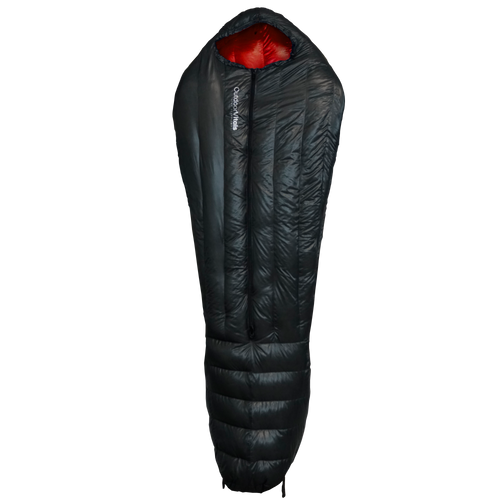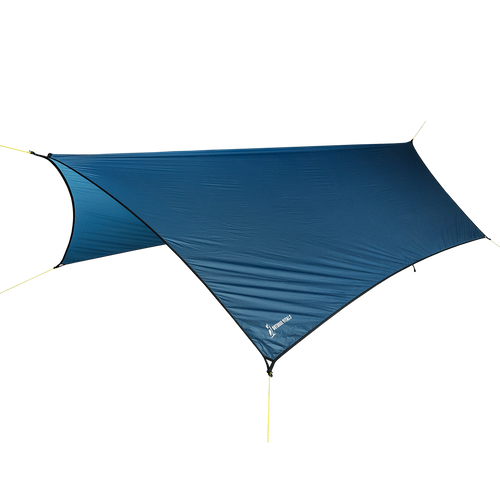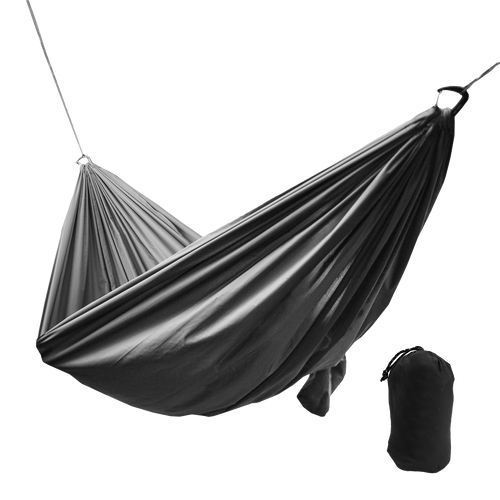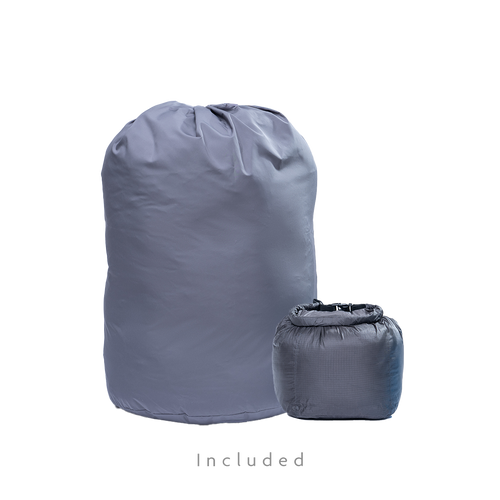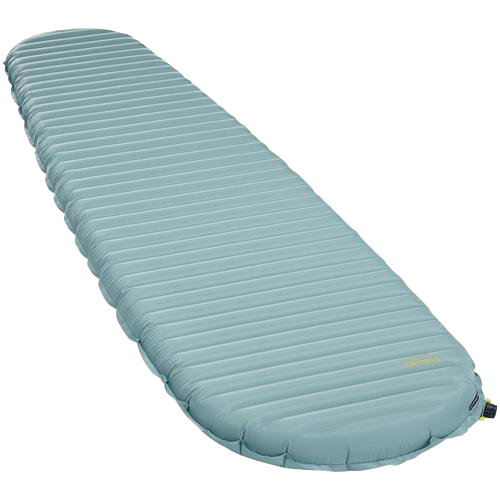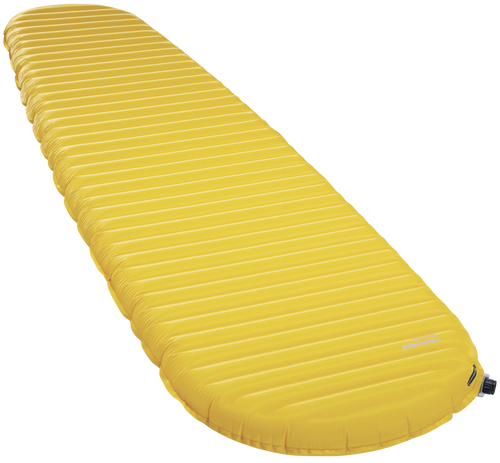10 Clothing Items Are All You Need - Adaptive Layering In the Outdoors
There are many great options when it comes to clothing for the backcountry.
But that's also a bit of a problem - there are a LOT of options...
With such a multitude of clothing choices available, people can sometimes feel overwhelmed to the point where they either don’t know what to buy, or they acquire more than they actually need, including clothing that is not appropriate at all.
As backpackers, we need a collection of clothing that functions as tools to allow us to remain active in the backcountry as long as we want, in any season.
By utilizing an Adaptive Performance Clothing or Layering System, we will have the right collection of clothing that will keep our bodies performing optimally in the inevitable changing conditions like weather, terrain, and strenuousness of the journey.
The Adaptive Performance Clothing System
Our deliberately curated 10 piece clothing system has the versatility to meet needs for all but the most extreme conditions in the backcountry- year round.
MOST cold weather (winter) backpacking needs are met with this system. However in some extreme conditions, small modifications or supplemental pieces may be needed to meet additional demands on the body. Furthermore, this 10 piece system doesn’t contain conditional accessories like headwear, footwear, or handwear. This is not to dismiss their importance, but to primarily focus on the application of core pieces in a technical clothing system.
To understand the importance of each of our 10 recommended items in this clothing layering system, you need to understand its 3 main goals:
Goal 1 - Regulate & maintain our core body temperature
We can’t deviate too far from 98.6 degrees Fahrenheit. The 2 primary functions that accomplish this are below:
-
Moisture management, primarily moisture from the body. Clothing should move moisture away from our skin. In cold conditions this process helps reduce heat loss. In warm conditions it facilitates heat loss.
-
Protection from the elements: rain, wind, sun. All 3 of those factors accelerate heat loss or heat retention.
Goal 2 - Protect our bodies from external harm & contamination
-
Physical harm from cuts and scrapes that irritate and lead to infection.
-
Bug bites also lead to infection, allergic reaction, and irritation. See number 3 below for more explanation to why we want to protect from bugs.
Goal 3 - Keep our bodies comfortable and at maximum performance
By doing so, we can confidently stay in the field & enjoy our time there, knowing that our clothing will do its job.
Each piece in this system performs at least 1 of these purposes, sometimes more. Hence the use of the word ‘performance’ in this system.
But what about the word ‘adaptive’?
It’s an adaptive system in that the user selects from the collection to adapt to the variability of conditions that may occur on each specific trip. Essentially it's a mix and match system. The whole collection is not meant to be worn all at once.
There are some pieces in the system that will frequently, if not always, be worn. However, the adaptive element is also exercised by the user adapting to changing conditions within a single trip by selecting from the clothing she has packed. A simple example of this is putting on a rain jacket when it’s raining, & taking it off when it stops raining.
Critical Processes to Understand
Heat Loss
There are 4 ways our bodies lose heat. Radiation, evaporative cooling, convective heat loss, and conductive heat loss.
-
Radiation: our bodies constantly radiate or emit heat.
-
Evaporative cooling / heat loss: when moisture on the body draws heat away from the body as it evaporates.
-
Convective heat loss: when air moves across the body, it removes heat from it.
-
Conductive heat loss: when our bodies contact an object of lower temperature, heat is removed from our bodies and transferred to the other object.
Insulation
Cold air doesn’t work its way inward into our clothing. It’s quite the opposite.
Cold air accelerates the movement of our body heat away from our bodies. When we experience feeling cold, we are feeling the warmth from our bodies being pulled away from us. So when we apply insulation to our clothing system, we aren’t trying to keep cold air out, we are trying to keep our warm body heat from escaping. Insulation functions by trapping our body heat in little pockets of dead air space throughout whatever the insulation material is. There can also be dead air space between two separate layers, which does actually help with heat retention. In all these little dead air space pockets, the trapped air cannot move around or circulate, therefore it can’t pull heat away from the body. For this clothing system, an effective insulation piece should be constructed in a way that capitalizes on and maximizes dead air space.
What about warm conditions?
How do we apply the clothing system to keep cool and promote heat loss? All the same principles regarding heat loss apply. So to facilitate heat loss to cool down, we should remove as much insulation as possible from our bodies, and use our lightest weight, most breathable and moisture wicking layers to take advantage of our natural cooling system, sweat.
Our bodies naturally promote evaporative cooling via perspiration. The process of perspiration being pulled off our skin will accelerate heat loss. In addition to that, any movement of the air across our bodies will introduce convective heat loss and further cool our bodies down. This is why in warm conditions we want our baselayer top, at least, to be moisture wicking. The pulling of moisture off our skin pulls heat away with it. in warm conditions when we want to lose heat / stay cool. Lowest loft, lowest insulative value, highest moisture wicking, highest breathability.
Collections
To better understand the system, it’s helpful to group the various pieces into collections. Doing so simplifies the thought process of building the system, and helps us recall what items we’ll need as we plan for a trip. We need clothing to move in, clothing to protect our bodies, and clothing that manages our body temperature while we’re stationary.
It’s also important to note that although some items may be categorized in a collection, they can often overlap into use with other collections. That is the adaptive component that makes the system so effective.
Each of the 10 clothing items we recommend fit into one of the following 3 categories or collections:
Protective - clothing to protect our bodies
Static - clothing to manage temperature while stationary
10 Piece Adaptive Layering System Product Recommendations
Below are our 10 product recommendations that will help you have what you need for almost any condition, any time of year (with the exception of the most extreme of conditions like extreme cold & snow in winter.)
Click the links or keep scrolling to learn more details about each & how it fits into the adaptive system:
-
KINETIC - Baselayer top - short or long sleeve crew tee or hoodie.
-
KINETIC - Lightweight synthetic shorts - running style or traditional.
-
KINETIC - Baselayer bottom - synthetic or merino leggings or long johns.
-
KINETIC - Active Insulation - fleece, breathable lofted insulation, or hybrid.
-
STATIC - Static insulation - lofted insulation jacket.
-
STATIC - Sleeping set - top and bottom.

1. Baselayer top - short sleeve Tee, long sleeve Tee, or hoodie.
We use the Baselayer Top as the stand alone moving set top. This is our next to skin layer, which can be a short sleeved tee shirt, long sleeved tee shirt, or hoodie. This is the primary, first layer top in the moving set. For efficiency, the baselayer top is our daily hiking shirt. It should be athletic cut and close fitting. It should be made of lightweight synthetic or merino fabric, and very breathable. ( more details on baselayer fabric provided in the Baselayer section ). This piece should be moisture wicking, quick drying, and provide adequate sun protection. It should have good stretch and freedom of movement, and not be restrictive. We need this piece to be very comfortable so it’s not distracting. The fabric should move moisture away from the body, and keep us from getting too hot or too cold. This is a foundational layer that starts the system.
Recommendations: OV Altitude Hoodie, OV Tern Hoodie or Tern T-shirt.

2. Lightweight Synthetic Pants
This is the primary, full coverage hiking bottom layer. There is some personal preference that influences the choice to use long pants. Some people just can’t stand hiking in long pants and avoid it as much as possible. That’s understandable, but completely eliminating long pants from our clothing system places certain limitations or restrictions on the conditions we can hike in. There are also a lot of people that prefer to only hike in pants. Remember, versatility is a critical component of an Adaptable Performance Clothing System. To offer year round and multi-environmental versatility, a set of long pants is included in this system. To be fair, long pants can and do have certain drawbacks, but they have a lot of benefits as well.
These are lightweight pants. We don’t want them made of heavy, overly robust fabric, as that adds unnecessary weight and bulk, which demands more physical effort from us. A quality lightweight pant will offer ample durability for the benefits it provides. Our pants should be made of tightly woven synthetic fabric to promote adequate wind resistance, durability, and drying quickly.
Of course there is some subjectivity to how we want our pants to fit, but it’s important to remember the principles of efficiency. Pants should not be so roomy that they have excess fabric, which means extra weight and drag that our bodies have to deal with. Conversely they shouldn’t be so tight that they are restrictive or don’t allow air movement. They should be highly breathable. Pants should have some built in stretch to allow as much mobility and freedom of movement as possible.
***Some hikers, women especially, seem to like hiking in leggings, yoga pants, or similar skin tight pants. This is understandable given the comfort benefits. But it's important to keep in mind that there are conditions where this could lead to problems. They might not be ideal in conditions with high insect activity. Mosquitoes and black flies can bite right through fairly thick knit fabrics that are tight against the skin. When mosquitoes and black flies are at their highest levels of activity and presence, it would be worth considering a different clothing choice.
Pants protect our bodies from the sun, which can accelerate the processes that lead to heat injuries and illness. They protect us from poisonous plants, bugs, and cuts and scrapes from the environment we’re traveling through. All of which can lead to infection and illness. If we have a backcountry route that is mostly off trail, a set of pants is a great choice, since it’s likely that we’ll have more brush ups with plant life. Pants also protect us from wind, which helps preserve our body temperature. Pants are inherently warmer than shorts, since they completely cover our legs, which creates dead air space between our skin and the outside air, slowing the release of body heat. During high physical activity in cold weather, a set of long pants on their own can often provide adequate protection and heat retention for optimal body temperature and performance. If we’re constantly moving, it’s not very often that we need to wear a baselayer underneath our hiking pants, but in very cold conditions, the combination is very effective.
Long pants do have their drawbacks and limitations though. They are heavier than shorts, and they are generally more restrictive of mobility. Just as they can keep us warm in colder conditions, in hot conditions they might retain too much heat for optimal performance.
Recommendations: OV Satu pants, Wrangler Outdoor Pants, Kuhl Renegade.

3. Shorts
This is our other primary bottom layer, to be used in warmer weather, and any other conditions we deem inappropriate or undesirable for long pants.
There are a couple options with hiking shorts. Both options should still be a synthetic fabric for the same reasons as our long pants. On the more traditional / casual side, there are shorts that are essentially a set of long pants cut at the knee. The fit and construction is the same, and they’re made of the same fabrics, so they carry the same benefits that come from that fabric. These offer slightly improved mobility compared to pants, and since they only cover half the leg they aren’t as warm.
The other shorts option is a running style, or athletic set of shorts. These are a great hot weather option, or for really light and fast movement through the backcountry. These are generally a lighter weight piece, made of more breathable fabric, and they tend to be cut a little bit shorter or higher above the knee. This allows more freedom of movement and breathability for less total weight. As such they also dry faster. This is an important benefit especially when we encounter short, unexpected rain showers in warm conditions that don’t warrant putting on rain gear. There are times when this really helps with our efficiency of travel. With an understanding of the benefits of long pants, the drawbacks of shorts are obvious. They provide less protection from scrapes, the sun, bugs, and plants.
With either shorts option, stretch is always preferred, but not as critical if the shorts don’t extend below the knee. The fit should allow unrestricted mobility without excess fabric, and it shouldn’t be so tight that it feels restrictive or hot.
Recommendations: OV Satu shorts, Nike Challenger running shorts.

4. Baselayer Pants - leggings, long johns, or tights
We generally only need to use baselayer bottoms in colder conditions. That’s because in our clothing selection we have already determined the applicability of pants or shorts from the Moving Set, which will meet the needs of most mild to warm conditions. So if the conditions are cold enough, then a baselayer is obviously an important piece to implement. Baselayer Bottoms function the same as the Top, so all the qualities and attributes we require for our Top, apply to the Bottom. Baselayers must be synthetic or merino. No cotton. It should be moisture wicking, quick drying, lightweight, and breathable. That’s really important because we don’t want this piece to be too warm. It’s an active piece and we warm up really quickly with even a thin legging under a set of pants, so it’s important to manage this attentively. If the conditions demand we use this piece, we want to be able to wear it as long as possible.
A slight difference between the top and bottom baselayers is that we do want the bottom to be form fitting. The baselayer bottom should fit right up against the skin for maximum contact, which enables optimal moisture wicking.
We should be confidently aware of the versatility of the baselayer bottom. It has relevant applications across the Kinetic Collection and Static Collection, in the full spectrum of conditions. Baselayer bottoms underneath a set of shorts is a great way to take off the cold edge during the brisk hours of the morning in geographically temperate summer conditions. In very cold conditions, a light baselayer underneath a lightweight pant from the Moving Set is plenty warm to move efficiently in the backcountry. In some conditions, the baselayer bottom is an excellent sleeping clothes piece.
Recommendations: OV Dragonwool Zipoffs, Smartwool merino leggings, Nike running tights.

5. Fleece, Breathable Lofted, or Hybrid Insulation Top
This should be worn over a baselayer top in cold conditions, when we know that we will be physically active for extended periods of time. We want the ability to wear Active Insulation for as long as possible before needing to remove it. Active Insulation should be just warm enough to comfortably move through the backcountry without overheating. With that requirement, it is critical that the Active Insulation piece is highly breathable so it can move moisture away from our bodies.
The active insulation piece needs be lightly insulating, highly breathable, and made of lightweight and quick drying materials. We need those qualities because we may use the piece for extended periods of high exertion, which means we’re likely to sweat in the piece. As such, this piece must be made of synthetic fabric for its ability to insulate when wet and dry quickly. Cotton does not have a place here. Because we prioritize efficiency, we don’t want to have to stop and change layers over and over. A properly performing active insulation piece will still provide warmth when wet, and its breathable construction and synthetic materials allow it to dry very quickly, because the warmth of our bodies can easily push excess moisture outward.
It’s important to keep in mind that no matter how breathable this piece is, we can exert ourselves at a rate that overwhelms even the most breathable active insulation. This requires us, the users, to be active contributors to the effectiveness of the system, and slow our pace down. Any time we add layers for warmth, we need to be prepared to adjust our pace and physical output accordingly.
Active insulation isn’t adequate as stand alone insulation for static periods in cold temperatures. That’s because active insulation has a relatively low volume of dead air space. If we’ve been wearing active insulation, when we stop for more than a few minutes we should put on static insulation over top of it to retain as much heat as possible to promote the movement of moisture outward, which will dry out the other layers.
This piece should have an athletic, trim fit over a baselayer top, with enough room and fabric stretch to provide full range of motion. It shouldn’t be restrictive at all.
Recommended options:
-
Hybrid - fleece and windbreaker: Polyester micro fleece w/ Windbreaker
-
Lofted breathable insulation: OV Ventus Hoodie.
-
Fleece / Grid fleece: Far Point Alpha Hoodie, Patagonia Micro D, Patagonia R1.

6. Waterproof Breathable Rain Jacket
The rain jacket’s purpose is to keep our upper body dry in order to protect us from convective and evaporative heat loss. Rain jackets are a very technical and expensive piece of clothing, yet they have a very narrow use case. We should avoid wearing a rain jacket unless the conditions call for it. When we need a rain jacket, we absolutely need it.
This piece should be made of a high quality waterproof breathable ( WPB ) laminate, which is a composite fabric consisting of a face fabric, membrane, and backer. Our rain jacket must always keep us dry from water on the outside, and it needs to breathe and ventilate from the inside. We should look for an appropriate balance of minimal weight, durability, and comfort, and our selection should always be based on our most traveled or anticipated environmental conditions.
Specific features or qualities we need are ventilation, minimal pockets, and all zippers should be water resistant, preferably YKK Aquaguard zippers. The rain jacket should have high breathability ratings and high waterproof ratings, keeping in mind that breathability is relative, and the best thing we can do to avoid overheating and overwhelming the breathability of the jacket is to reduce our physical output, and utilize the ventilation system of the jacket. The rain jacket also must have meticulously sealed seams and be deliberately constructed to account for any possible breach point where water could enter.
We also need to have realistic expectations for this piece. If we are continually hiking in the rain while wearing a rain jacket, it is likely AND acceptable for us to get a little damp inside the jacket. Damp and warm is different and much better than being soaked and exposed to the elements without a rain jacket.
Nylon face fabric is a little more durable than a polyester face fabric, but that shouldn’t be a singularly deciding factor. A rain jacket’s fit should allow for layering underneath it without being excessively roomy so that when it’s not worn without a lot of layers, it doesn’t catch the wind and create a lot of drag. The fit should be efficiently designed to allow the most layering possible for the least amount of fabric. Setting exact weight standards is not very practical, but we do want our system to be as lightweight as possible while performing its necessary functions. For most environments and conditions, 10 to 12 ounces should be the upper limit in jacket weight. There are very effective options that weigh much less than that.
While a rain jacket certainly will block the wind, there are much better alternatives ( like a wind jacket ) to wear when it’s not precipitating.
Recommended options: OV Tushar Rain Jacket, Outdoor Research Helium, Arcteryx Beta LT.

7. Waterproof Breathable Rain Pants, or Skirt
Much of the same thought and consideration we put into a rain jacket applies to rain pants, although if the conditions warrant rain pants, the consequences of not having them could be more dire. This is especially true if we’re wearing shorts, since exposed legs have a lot of surface area that when wet will massively accelerate convective heat loss.
The rain pant’s purpose is to keep our legs dry in order to protect us from convective and evaporative heat loss. Rain pants are a very technical and expensive piece of clothing, yet they have a very narrow use case. We should avoid wearing them unless the conditions call for it.
This piece should be made of a high quality waterproof breathable ( WPB ) laminate, which is a composite fabric consisting of a face fabric, membrane, and backer. Our rain pants must always keep us dry from water on the outside, and they need to breathe and ventilate from the inside. We should look for an appropriate balance of minimal weight, durability, and comfort, and our selection should always be based on our most traveled or anticipated environmental conditions. The fit should be efficiently designed to allow the most layering possible for the least amount of fabric.
Specific features or qualities we need are ventilation, minimal pockets, and all zippers should be water resistant, preferably YKK Aquaguard zippers. The laminate fabric should have high breathability ratings and high waterproof ratings, keeping in mind that breathability is relative, and the best thing we can do to avoid overheating and overwhelming the breathability of the pants is to reduce our physical output, and utilize whatever ventilation options are available. Rain pants must also have meticulously sealed seams and be deliberately constructed to account for any possible breach point where water could enter. Nylon face fabric is a little more durable than a polyester face fabric, but that shouldn’t be a singularly deciding factor.
We also need to have realistic expectations for this piece. If we are continually hiking in the rain wearing rain pants, it is likely AND acceptable for us to get a little damp inside them. Damp and warm is different and much better than being soaked and exposed to the elements without rain pants.
Our rain pants might get packed less frequently than the rain jacket, and that’s ok. Our clothing system is built around adaptability and versatility. Packing rain pants is a bigger weight commitment, so if the weather forecast doesn’t show much chance for rain, we might be justified in not packing rain pants, knowing that any rain that does occur will be short-lived. In that case our rain jacket will be adequate. However, if we know there’s a good chance for sustained rain, especially a wet weather system that will stick around for a few days, then we should definitely consider packing rain pants.
In order to pack our gear efficiently we need to be up to date as possible for expected weather conditions . However, in most mountainous terrain the weather changes quickly, and we can’t always rely on a weather forecast. That’s why we need to exercise our clothing system as much as possible and constantly assess how things work in the conditions we encounter.
Another set of conditions that warrants packing rain pants is high elevation mountain ranges, through terrain above the treeline. These are very exposed conditions, and rain at that elevation is usually combined with wind, cold temperatures, and often hail and sleet. These are very austere and potentially dangerous conditions so we should pack our rain gear accordingly so we have as much protection as possible.
Another lower body rain gear piece that can be an option is a rain skirt. It is essentially what it says it is. It’s a waterproof skirt worn over our moving set bottom, whether it’s pants or shorts. A skirt isn’t nearly as protective as rain pants, but for their weight they provide a decent improvement in protection compared to not wearing a waterproof bottom. They can be useful while wearing shorts in intermittent rain because they will prevent our shorts and that bodily region from getting soaked, which is much better than being soaked. So for its size and weight ( typically less than 3 ounces ), a rain skirt can give a significant boost in weather preparedness. Keep in mind that in conditions that demand rain pants, even a rain skirt will not do.
Recommended options: OR Helium, Enlightened Equipment skirt.

8. Lightweight Windbreaker
The windbreaker’s job is to block the wind to prevent excessive convective heat loss. It’s an incredibly versatile piece for its weight, and can be combined with many pieces within the system for an extra, breathable boost in warmth. In warm seasonal conditions, the windbreaker can be worn alone over the Moving Set baselayer top to take off a morning chill. In very cold temperatures, during very high exertion activities like snowshoeing or alpine touring, the windbreaker will provide all the extra heat retention we need without any other layers, while allowing excess heat to escape so we don’t overheat.
We should select the lightest weight windbreaker that will be durable enough for our expected conditions, breathe well, and pack down to a small size. In order to keep the weight down, minimal pocketing and zippers is preferable. Adjustability features, like hood adjustment and hem adjustment, should not be considered a requirement. While they can add some functional and comfort benefits, they should be carefully considered because they also increase the overall weight of the garment. A well executed windbreaker design can accomplish a good fit that doesn’t require adjustment. The fit should be similar to the rain jacket. It should allow for layers underneath, without being baggy or excessive. We want it as trim as possible, since we will often wear this with nothing other than a baselayer top, and excess fabric in the wind will create a lot of drag and significantly increase our physical effort.
A full zip windbreaker is obviously a little easier to put on and take off, especially over layers. But it shouldn’t be considered a requirement for performance. A hood is very desirable and offers more protection, but if weight savings is a higher priority, then a half zip without a hood would be a very lightweight option. The windbreaker should be made with tightly woven, preferably ripstop fabric with a DWR treatment, which will help shed light precipitation. Those are certainly requirements we want, because we want to avoid wearing a rain jacket as much as possible. Nylon fabric is a little more durable than polyester, so that should be considered. Setting exact weight standards is not very practical, but we do want our system to be as lightweight as possible while performing its necessary functions. If the windbreaker is approaching 10 ounces, some re-assessment might be warranted.

9. Lofted Insulation Jacket
We put this on to stay warm when we’re stopped for more than a few minutes, for the night, or to supplement our sleep system. If it’s really cold, and our clothing is wet from sweat or precipitation, immediately put this piece on to start pulling moisture out of the clothing system and start the drying out process. Putting on static insulation over damp clothing will keep our body temperature optimal, and jumpstart the drying process. This is not an active hiking piece, so we shouldn’t be physically active in this piece.
To select the right static insulation piece for our clothing system, we need to be aware of the benefits and drawbacks of the types of insulation, and assess our priorities and conditions. Synthetic insulation weighs a bit more than down, but it is very water resistant and stays warm when it is wet. Down insulation has the ultimate warmth to weight ratio, and is more compressible, but its ability to retain heat can be compromised by getting wet. Garment weight is an important consideration, and we generally want the lightest weight possible for an adequate warmth level in our expected conditions. There isn’t one jacket that is ideal in all conditions so we need to be thoughtful and deliberate about selecting a piece given all the considerations and our priorities.
Nylon or polyester fabric will offer the best combination of performance and weight, and water resistant face fabrics with DWR are desirable. However, we don’t want a waterproof puffy jacket. They aren’t breathable enough, and we need breathability to allow moisture to work its way out of our layering system once we put on the jacket and start drying out any existing moisture within our layers.
The jacket’s fit should allow for all our layers except the rain jacket underneath it, without restricting our movement or compressing the static insulation. If there is any precipitation, the rain jacket needs to be put over top of the static insulation jacket, especially in the case of down insulation. This is a last stand item, which means that in the worst cold and wet conditions, when the clock is ticking toward hypothermia, this piece will tip the scales in our favor towards a safe, warm body temperature, and peace of mind.
Recommended options: OV NovaPro & NovaUL, OV Vario Jacket, OV Ventus Hoodie.

10. Synthetic or Merino Shirt, & Leggings or Long Johns
Once we’ve stopped for the day and set up our camp, the last thing we should do with our clothing system before getting into our sleep system is to change into our sleeping set.
This is a lightweight synthetic or merino top and bottom. However, the sleeping set should be considered a single item, because it should always be kept together, always dry, and separated from clothing we might wear throughout the day. If we get into a sleeping bag cold and shivering because we’re wearing wet clothes, it is really hard to warm up and get a good sleep. If our thought process led us to wear a sleeping set bottom during the day, we better be sure it is dry by the time we crawl in our tent at night. If we select the right clothing items for a given trip into the backcountry, we should be able to use the sleeping set for sleeping only.
While it’s reasonable and efficient to use our baselayer bottom for sleeping in and hiking in cold conditions, if the expected conditions indicate that there is a reasonable chance we’ll get wet while wearing the baselayer bottom, we should consider packing an extra bottom to sleep in. We just need to be sure we always have a dry Sleeping Set.
These pieces should be lightweight, breathable, quick drying, and not restrictive. These characteristics are important because even in our sleep we need our clothing to move moisture away from our bodies, and stay dry. We also don’t want our clothing to restrict blood flow, which will result in cold sleep. For effective moisture management, these pieces should be trim or close fitting.
If our bodies and clothing system get wet in cold conditions, the sleeping set is a last stand item that will be pivotal in stopping heat loss and restoring a warm comfortable body temperature.
Recommended options: OV Dragonwool zipoffs, Nike running tights, capilene, Smartwool merino leggings.
There you have it! If you have all 10 of these different performance apparel items, you'll be able to adapt to almost any trip into the backcountry based on conditions - & stay comfortable!
For a more detailed explanation of this system and recommendations, check out our 10 Piece Adaptive Layering System framework here.
1 comment
Thank you for the content. Interesting and informative. Although hand warmth is not specifically reviewed, does the team have recommendations on warm/water resistant/breathable/flexible/durable gloves?

